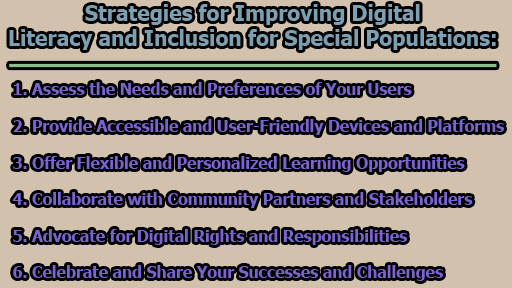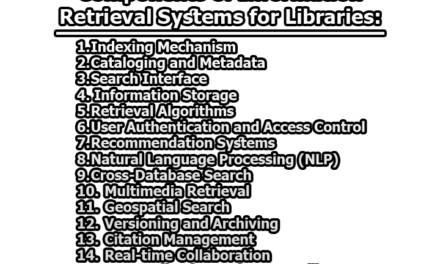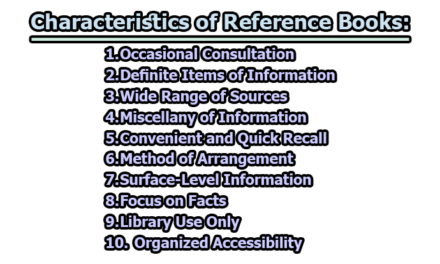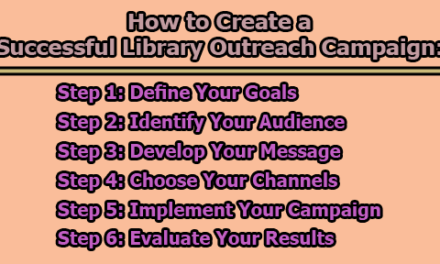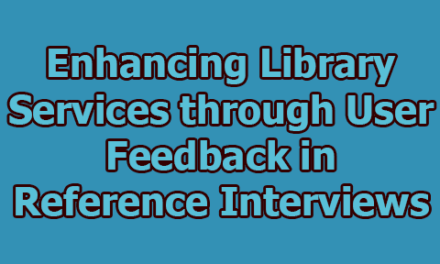Strategies for Improving Digital Literacy and Inclusion for Special Populations:
Digital literacy and inclusion have become crucial elements in the lives of people today, enabling access to information, education, and opportunities. However, special populations, including people with disabilities, seniors, immigrants, and low-income groups, often face significant barriers in fully participating in the online world. As library professionals, we play a vital role in promoting and supporting digital literacy and inclusion for these special populations. In this article, we explore strategies for improving digital literacy and inclusion for special populations.
1. Assess the Needs and Preferences of Your Users: Before launching any digital literacy and inclusion program, it is essential to understand the unique needs and preferences of your target users. Methods like surveys, interviews, focus groups, and observations can help gather insights. Consider factors such as cultural backgrounds, linguistic diversity, socio-economic conditions, existing digital skills, and access to technology. Tailoring your program to meet these expectations and goals is crucial.
2. Provide Accessible and User-Friendly Devices and Platforms: One of the primary barriers faced by special populations is a lack of access to suitable devices and platforms. Libraries can address this issue by providing a wide range of accessible and user-friendly devices and platforms. These may include computers, tablets, smartphones, e-readers, assistive technologies, and Wi-Fi hotspots. Moreover, ensuring that your library’s website and online resources are compatible with various browsers, devices, and screen readers is essential. Complying with web content accessibility guidelines (WCAG) is vital to ensure content is accessible to everyone.
3. Offer Flexible and Personalized Learning Opportunities: Recognize the diversity in learning styles and preferences among special populations. Overcome this challenge by providing flexible and personalized learning opportunities, such as online courses, workshops, webinars, tutorials, and mentoring. Allow users to choose their pace, level, and mode of learning, and customize their experience according to their interests and goals. Furthermore, offer ongoing support and feedback, encouraging the application of digital skills in real-life situations.
4. Collaborate with Community Partners and Stakeholders: The involvement of community partners and stakeholders is a key factor in promoting digital literacy and inclusion for special populations. Leverage the expertise, resources, and networks of local organizations, schools, businesses, and government agencies to enhance your programs. Collaborate with these partners to identify and reach potential users, co-create content and activities, and evaluate and improve outcomes. Working together ensures a more comprehensive and effective approach.
5. Advocate for Digital Rights and Responsibilities: An essential aspect of digital literacy and inclusion is fostering awareness of digital rights and responsibilities. Educate your users about their digital rights, such as privacy, security, copyright, netiquette, and digital citizenship, and how to protect and exercise them online. Advocate for these rights and responsibilities at local, national, or global levels and support initiatives that promote digital inclusion, equity, and justice. By doing so, you contribute to a safer and more inclusive digital environment.
6. Celebrate and Share Your Successes and Challenges: Finally, celebrate and share the successes and challenges of your digital literacy and inclusion efforts. Engage your users, community partners, stakeholders, and peers in acknowledging their contributions and achievements. Utilize various tools and methods, such as stories, testimonials, photos, videos, and data, to document and showcase your results and impacts. By doing so, you can inspire and motivate others to join or support your efforts and learn from your best practices and lessons learned.
In conclusion, improving digital literacy and inclusion for special populations is a collective effort that libraries and library professionals can champion. By assessing user needs, providing accessible resources, offering personalized learning opportunities, collaborating with community partners, advocating for digital rights and responsibilities, and celebrating and sharing successes, we can create a more inclusive digital world. It is not just a duty but a responsibility to ensure that all individuals, regardless of their backgrounds, can fully participate in the digital age, accessing the information, education, and opportunities they need to thrive.

Library Lecturer at Nurul Amin Degree College

